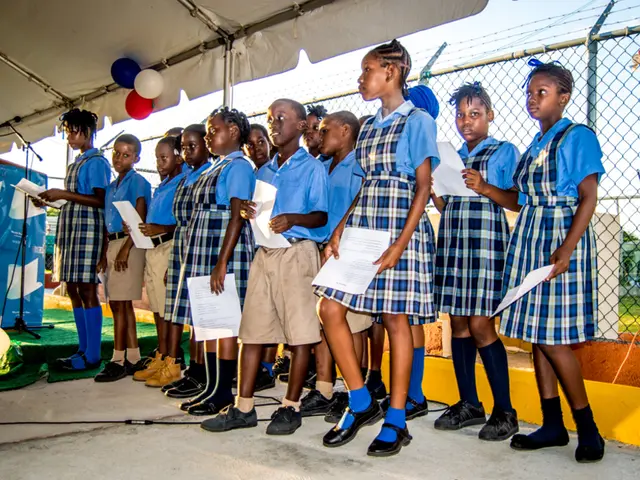Robust and Resilient Roof Architectures
A well-designed roofing system is crucial for the protection and longevity of any building, acting as its primary defence against rain, snow, wind, and intense sun. Creating a resilient roofing system involves several key elements, including advanced materials, climate-specific design, and ongoing maintenance. Here’s a comprehensive overview tailored to different climates:
## Key Elements of a Resilient Roofing System
1. **Advanced Materials** - **Metal Roofs**: Known for their fire resistance and durability, metal roofs are ideal for various climates. They are effective in both high-wind and heavy snow conditions. - **EPDM (Ethylene Propylene Diene Terpolymer)**: This material is particularly suited for flat roofs due to its durability and resistance to UV exposure and weather damage. - **Slate and Tile Roofs**: These provide excellent fire resistance and are suitable for areas with potential fire hazards.
2. **Climate-Specific Design** - **High-Wind Areas**: Use hurricane-resistant materials like metal or specially designed tiles to fortify roofs against extreme winds. - **Heavy Snowfall**: Snow-load rated materials, such as reinforced tiles or metal, are crucial for managing heavy snow accumulation. - **Coastal Regions**: Select materials that can withstand salt and humidity, such as metal or certain types of tiles.
3. **Ongoing Maintenance** - **Regular Inspections**: Frequently inspect roofs for damage or wear, especially after extreme weather events. - **Proper Installation**: Ensure that all roofing systems are installed correctly to maximize durability and performance. - **Flashing and Sealing**: Properly seal and flash areas around vents, chimneys, and skylights to prevent leaks and intrusion.
## Features for Various Climates
- **Tropical Climates**: - Use materials resistant to high temperatures and UV exposure. - Ensure good ventilation to reduce heat buildup.
- **Temperate Climates**: - Balance between thermal insulation and ventilation is crucial. - Consider using materials that can handle moderate weather conditions.
- **Cold Climates**: - Use snow-load rated materials to prevent structural damage. - Implement steep roof pitches to aid snow shedding.
- **Coastal Areas**: - Select materials resistant to salt and humidity. - Design should include features to withstand high winds and potential flooding.
By incorporating these elements and tailoring the design to specific climatic conditions, a roofing system can be made highly resilient and effective.
Professional maintenance programs help manage common vulnerabilities like loose flashing, dried-out sealants, clogged drainage, granular loss, and extend the life of the roof. The design of a roof, including slope, ventilation, and underlayment, is crucial for creating a resilient system.
Modern roofing materials are engineered for durability and efficiency, such as advanced asphalt shingles, metal roofing, tile, synthetic membranes, and green roofs. In regions with intense UV exposure and extreme heat, knowledge of heat-reflective coatings and advanced ventilation is crucial for durability.
Investing in expert installation, climate-specific design, and ongoing care is a strategic decision that leads to energy savings, higher property value, and peace of mind. A strong building begins with a well-designed, expertly built, and carefully maintained roofing system.
Ongoing maintenance is necessary to maximize a roof’s lifespan and performance, including regular inspections to identify small issues before they become large, expensive problems. A roof is a dynamic system that requires careful management for its performance, health, and safety of the structure and its occupants.
New tools, like drone inspections, make roof maintenance more efficient and thorough than ever. Green roofs (living roofs with vegetation) provide natural insulation, manage stormwater runoff, and improve air quality. Hurricane straps and interlocking shingles are recommended for high wind areas to secure the roof deck to the walls and prevent panels from lifting. Impact-resistant materials (Class 4) are recommended for areas prone to hailstorms to withstand damage from hail, preventing dents and punctures.
In conclusion, understanding the unique challenges posed by different climates and tailoring roofing solutions accordingly is essential for creating a resilient and long-lasting roofing system. Regular maintenance, expert installation, and climate-specific design are the cornerstones of a robust and efficient roofing system that protects your investment and provides peace of mind.
- To ensure a resilient roofing system in guarding your home-and-garden during coastal regions, select materials resistant to salt and humidity, such as metal or certain types of tiles, and incorporate features designed to withstand high winds and potential flooding.
- In the realm of home-improvement and home-and-garden maintenance, regular inspections of various lifestyle spaces, including the roof, are necessary to maximize their lifespan and performance, identifying small issues before they become large, expensive problems.




